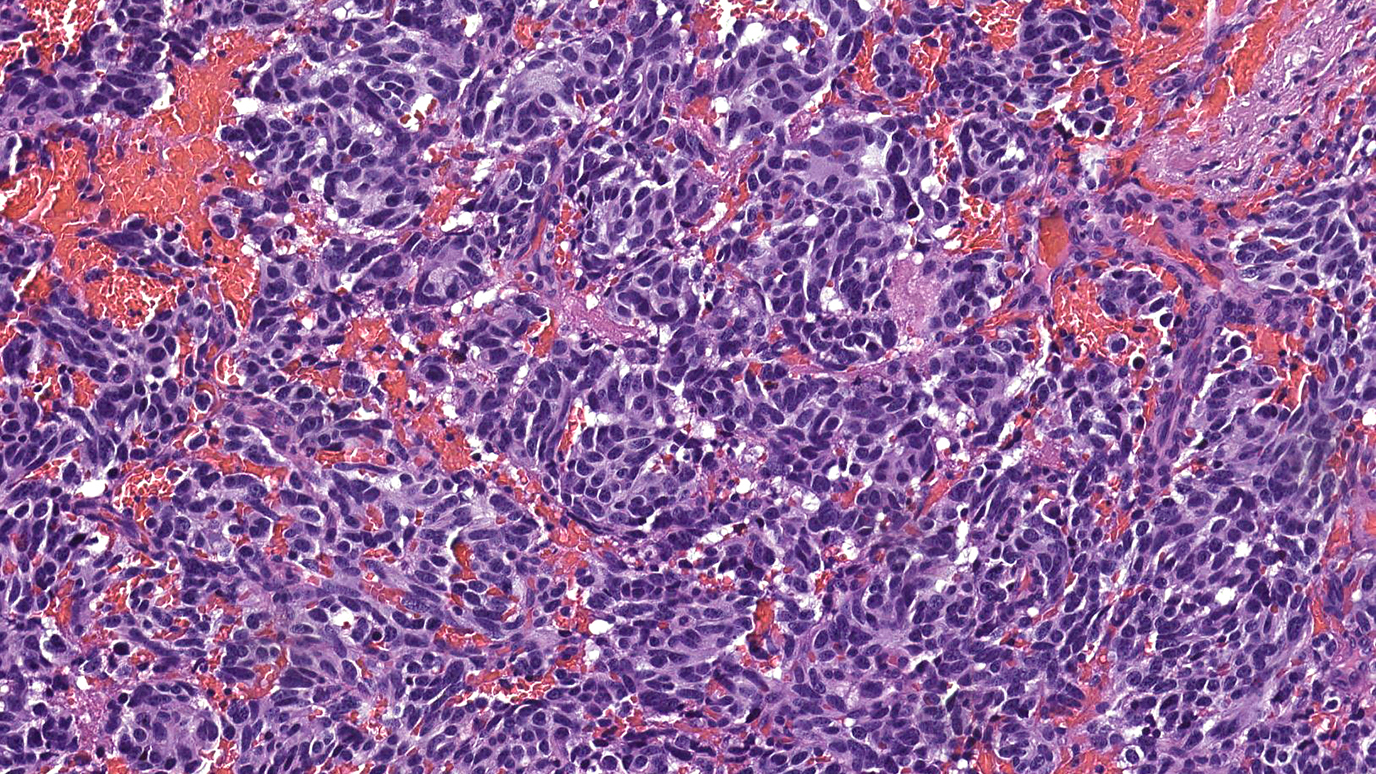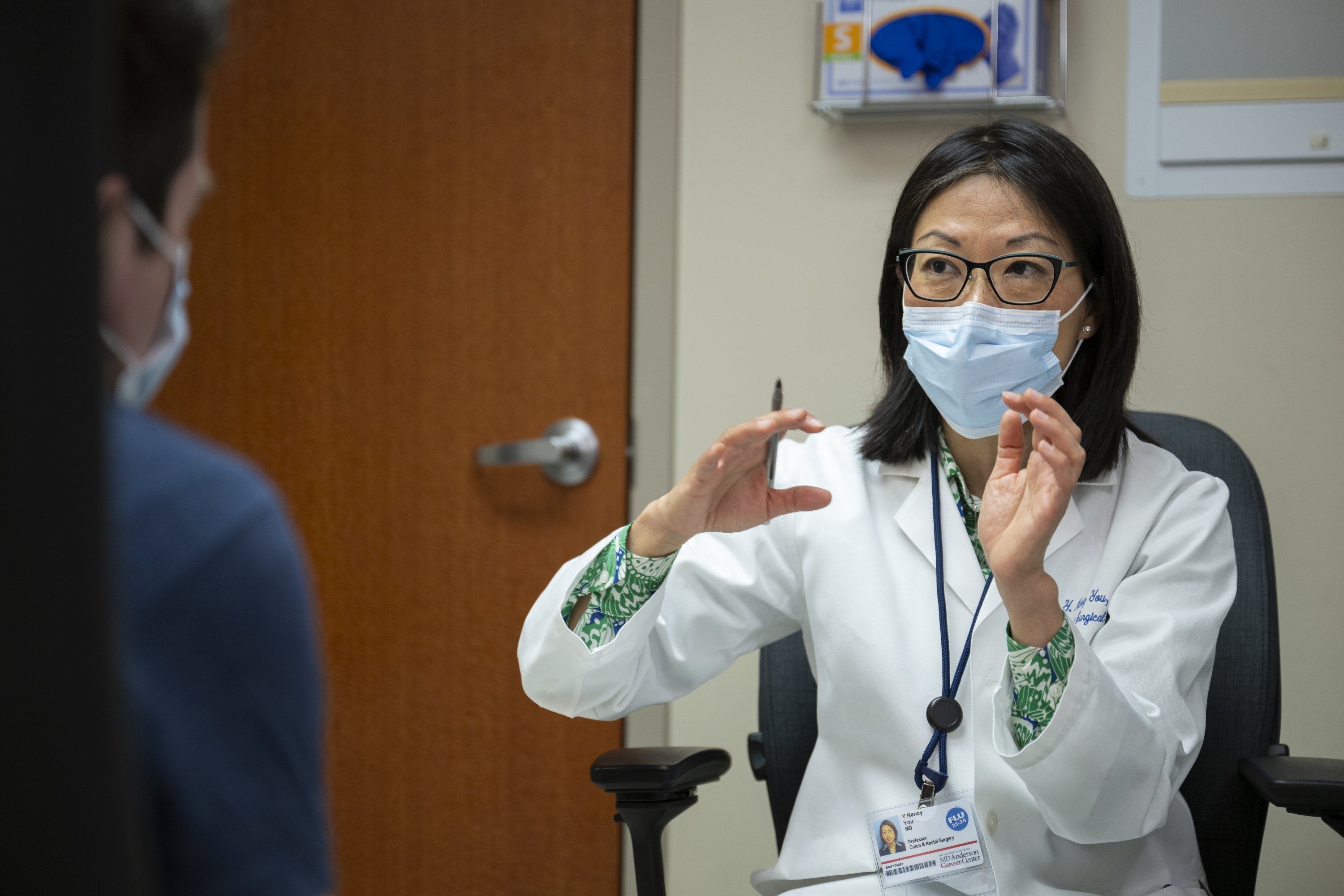- Diseases
- Acoustic Neuroma (14)
- Adrenal Gland Tumor (24)
- Anal Cancer (68)
- Anemia (2)
- Appendix Cancer (16)
- Bile Duct Cancer (26)
- Bladder Cancer (72)
- Brain Metastases (28)
- Brain Tumor (232)
- Breast Cancer (714)
- Breast Implant-Associated Anaplastic Large Cell Lymphoma (2)
- Cancer of Unknown Primary (4)
- Carcinoid Tumor (8)
- Cervical Cancer (158)
- Colon Cancer (166)
- Colorectal Cancer (118)
- Endocrine Tumor (4)
- Esophageal Cancer (44)
- Eye Cancer (36)
- Fallopian Tube Cancer (8)
- Germ Cell Tumor (4)
- Gestational Trophoblastic Disease (2)
- Head and Neck Cancer (12)
- Kidney Cancer (128)
- Leukemia (342)
- Liver Cancer (50)
- Lung Cancer (286)
- Lymphoma (278)
- Mesothelioma (14)
- Metastasis (30)
- Multiple Myeloma (100)
- Myelodysplastic Syndrome (60)
- Myeloproliferative Neoplasm (6)
- Neuroendocrine Tumors (16)
- Oral Cancer (100)
- Ovarian Cancer (172)
- Pancreatic Cancer (160)
- Parathyroid Disease (2)
- Penile Cancer (14)
- Pituitary Tumor (6)
- Prostate Cancer (146)
- Rectal Cancer (58)
- Renal Medullary Carcinoma (6)
- Salivary Gland Cancer (14)
- Sarcoma (238)
- Skin Cancer (296)
- Skull Base Tumors (56)
- Spinal Tumor (12)
- Stomach Cancer (64)
- Testicular Cancer (28)
- Throat Cancer (92)
- Thymoma (6)
- Thyroid Cancer (98)
- Tonsil Cancer (30)
- Uterine Cancer (80)
- Vaginal Cancer (16)
- Vulvar Cancer (20)
- Cancer Topic
- Adolescent and Young Adult Cancer Issues (20)
- Advance Care Planning (10)
- Biostatistics (2)
- Blood Donation (18)
- Bone Health (8)
- COVID-19 (362)
- Cancer Recurrence (120)
- Childhood Cancer Issues (120)
- Clinical Trials (632)
- Complementary Integrative Medicine (22)
- Cytogenetics (2)
- DNA Methylation (4)
- Diagnosis (232)
- Epigenetics (6)
- Fertility (62)
- Follow-up Guidelines (2)
- Health Disparities (14)
- Hereditary Cancer Syndromes (126)
- Immunology (18)
- Li-Fraumeni Syndrome (8)
- Mental Health (116)
- Molecular Diagnostics (8)
- Pain Management (62)
- Palliative Care (8)
- Pathology (10)
- Physical Therapy (18)
- Pregnancy (18)
- Prevention (918)
- Research (392)
- Second Opinion (74)
- Sexuality (16)
- Side Effects (604)
- Sleep Disorders (10)
- Stem Cell Transplantation Cellular Therapy (216)
- Support (402)
- Survivorship (322)
- Symptoms (182)
- Treatment (1786)
Astrocytoma survivor: I feel lucky
BY Meagan Raeke
4 minute read | Published March 04, 2019
Medically Reviewed | Last reviewed by an MD Anderson Cancer Center medical professional on March 04, 2019
How often does a brain tumor save your life? In Kellilyn Monar’s case, it may have done just that. She’d planned to be at the Route 91 Music Harvest Festival in her hometown of Las Vegas on Oct. 1, 2017. But a brain tumor diagnosis interrupted those plans.
“I go every year, but because my surgery was scheduled that week, I called to get a refund on my tickets,” she says. When the concert became the site of the deadliest mass shooting in U.S. history, Kellilyn was safely at home, preparing to travel to Houston for her brain tumor surgery.
“In a way, MD Anderson may have saved my life twice,” she says.
Simple seizure: an early brain tumor symptom
Kellilyn had learned she had a brain tumor two months earlier. She didn’t know the episodes of numbness that traveled up her right leg to her face were simple motor seizures. She thought they were spasms from the back pain that had been growing worse for several months.
“One day I was getting onto the elevator with my boss, and it happened again,” Kellilyn recalls. “He said, ‘That’s not your back, that’s your head. You need to go to the hospital.’”
He turned out to be right: an MRI in the emergency room revealed Kellilyn had a large tumor in the left frontal and temporal lobes of her brain. She had her biopsy in Las Vegas, and learned it was a grade II astrocytoma. But Kellilyn wasn’t comfortable moving forward with further treatment at her local hospital.
“They recommended radiation and chemotherapy to treat the tumor, but also said I’d have massive damage to healthy brain cells,” Kellilyn says. “That was unacceptable.”
Seeking a second opinion
Her family sought a second opinion to see if surgery was an option. A neurosurgeon at another hospital recommended an awake craniotomy, a specialized neurosurgical procedure in which the patient is painlessly awoken during surgery to help map critical brain functions while the tumor is removed.
The oncology panel assessing Kellilyn’s case didn’t accept his recommendation, but her parents were convinced surgery would provide the best results.
Where you go first matters
“My dad said we only have one chance to make the best decision,” Kellilyn says. “If we made the wrong decision first, our next steps would be limited.” After reading that U.S. News & World Report ranked MD Anderson as the No. 1 hospital for cancer care in the country, they requested an appointment.
Choosing MD Anderson for brain tumor treatment
Even though MD Anderson was recovering from Hurricane Harvey, Kellilyn was quickly scheduled to see neuro-oncologist Carlos Kamiya-Matsuoka, M.D., in MD Anderson’s Brain and Spine Center. He referred her to neurosurgeon Sujit Prabhu, M.D., who strongly advocated for an awake craniotomy.
“I was so impressed with their professionalism and care that I decided to put my future in the capable hands of the MD Anderson team,” Kellilyn says.
Preparing for a successful brain tumor surgery
Once her awake craniotomy was scheduled, Kellilyn was surprised to learn she’d need to arrive at MD Anderson several days beforehand for two full days of more testing.
“I thought they’d just open my head and go in,” Kellilyn says. “But Dr. Prabhu explained that’s not how MD Anderson does surgery for brain tumors like mine.”
The pre-surgical testing included a neuropsychological evaluation, functional MRI and transcranial magnetic stimulation. The tests were the first step in assessing Kellilyn’s cognitive function and mapping her critical brain functions in preparation for surgery. Interestingly, the tests revealed that Kellilyn’s essential speech functions had reorganized from the left to the right side of her brain.
During the 18-hour operation, Kellilyn’s feedback helped Prabhu safely remove 95% of the brain tumor, while preserving her critical brain functions.
After the awake craniotomy: Kellilyn’s side effects and recovery
After surgery, Kellilyn developed several short-term side effects, including blurry vision and trouble speaking (aphasia). She worked with Katherine Connelly, an MD Anderson speech language pathologist in rehabilitation services, and the symptoms resolved a few months after surgery.
Since then, Kellilyn has returned to her job in entertainment engineering and enrolled in a master’s degree program in Las Vegas. She returns to MD Anderson every three months for follow-up care.
“I’ve already won.”
During an early post-surgical visit, Kellilyn received great news: Not only was her brain showing remarkable plasticity in recovering from surgery, but her remaining “spot” of tumor was so minimal and stable that she wouldn’t require chemotherapy or radiation therapy.
“That was probably the best news I’d ever heard,” Kellilyn says. “Sometimes I think with how lucky I’ve been, now is a good time to play the lottery. But then I realize – I’ve already won.”
Request an appointment at MD Anderson online or by calling 1-877-632-6789
Related Cancerwise Stories

My dad said that we only have one chance to make the best decision.
Kellilyn Monar
Survivor





